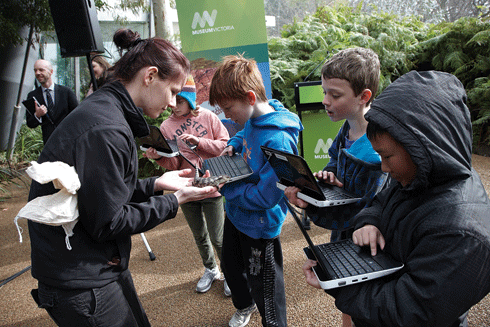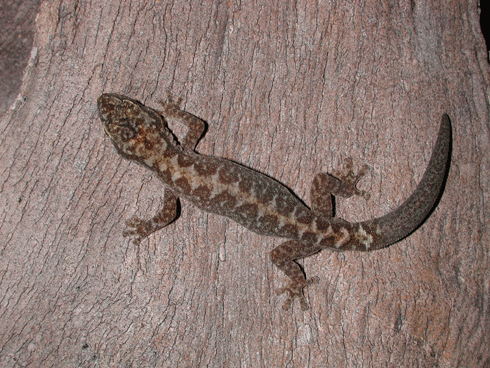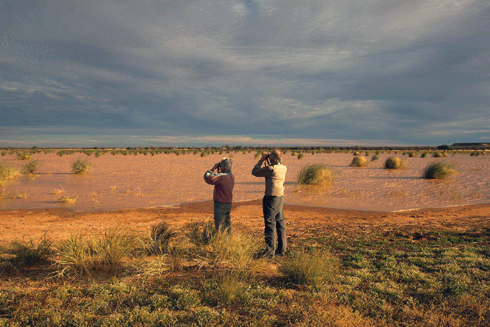
|
Published:
Connecting the dots
• How do food retailers channel nutritious excess stock to the most vulnerable in our communities?
• How do farmers who are into sustainable agriculture provide choice to consumers in big cities?
• How do organic cotton farmers in developing countries find buyers for their products in international markets?
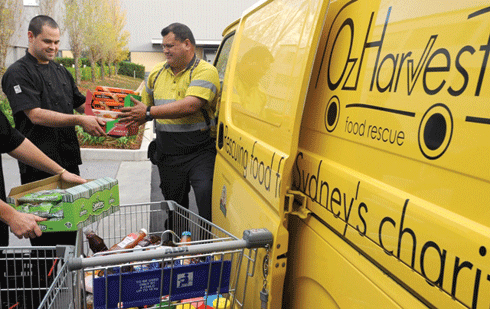
|
| OzHarvest picks up unused food for distribution to charities. |
The answer to each of these questions is the same – through ‘connectors’.
Malcolm Gladwell, in his book on social change entitled The Tipping Point1, suggests that connectors are ‘people with a special gift for bringing the world together’.
These connectors have the ability to embrace sustainability as an opportunity, rather than a challenge. They can think across traditional organisational and sectoral boundaries and connect disparate needs in innovative ways.
In so doing, they are able to create networks that deliver positive environmental, social and economic outcomes.
For example, both large and small food retailers are able to channel food in excess of their needs to the most vulnerable in our communities through OzHarvest2, which provides a ‘rescue’ service for the food can benefit those in need. Currently operating in Sydney, Canberra, and Newcastle, OzHarvest collects fresh food and meals that are unsold or unused by caterers, restaurants, cafes and retailers and distributes them to charities.
By connecting supply (excess food) to demand (disadvantage in communities), OzHarvest :
-
diverts hundreds of tonnes of food from landfill
-
supplies nutritious meals to a network of charities to distribute to disadvantaged people
-
frees up funds in charitable organisations that would otherwise be spent on food for other essential services and activities.
Local farmers practising sustainable agriculture can provide choice to consumers in big cities through connectors like Food Connect3. This organisation sees itself as ‘an organisation that facilitates a trading relationship between farmers and subscribers’. Food Connect sources local, sustainably produced, seasonal produce and centralises its collection. This ‘harvest’ is then sorted, packed and distributed to a network of ‘city cousins’ (distribution centres) in urban communities, ready for collection by ‘subscribers’ – customers who sign up to the service.
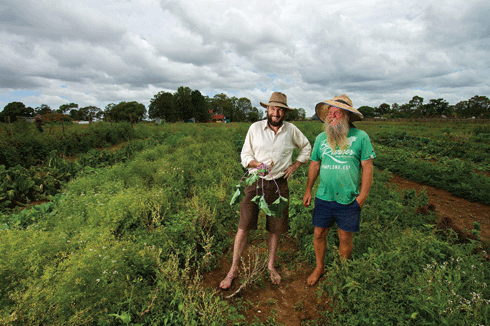
|
|
Robert Pekin (left), founder of Food Connect, and local farmer, Franco Cenciq, on Franco’s farm at Birkdale, Qld. Credit: Adam Sebastian West.
|
The Food Connect approach:
-
supports more sustainable farming practices, reducing the environmental impact of agricultural operations
-
provides fresh, nutritious, seasonal produce to urban consumers
-
reduces the carbon footprint of produce by facilitating local production and consumption.
Organic cotton farmers in developing countries can find buyers for their products in international markets through the Organic Exchange4. This service facilitates and nurtures an international network of retailers, manufacturers and farmers, with the aim of increasing the production and use of organic cotton and other fibres. The focus is on building demand and supply simultaneously through working across the organic cotton value chain.
Services provided by the Organic Exchange include acting as ‘matchmaker’ between buyers and sellers of organic fibres; providing advice on sustainable fibre production processes; and developing standards and assessment tools.
The Organic Exchange approach:
-
reduces the environmental impacts of cotton production through sustainable agriculture practices
-
rewards organic fibre producers through connecting them with demand in international markets
-
grows markets for organic cotton and fibre products through education and promotion.
These ‘connectors’ operate at different scales across communities, cities, regions and the globe.
But at the heart of each of these examples is the principle of collaboration between producers and consumers, often in new and novel ways. Each has been able to see and seed opportunity; connect supply and demand; and create value and benefits for all participants.
An emerging property of connectors is the scalability and replicability of these models, as organisations like OzHarvest and Food Connect expand operations in other communities or inspire others to start their own.
So ‘connectors’ are on the rise, playing a key role in meeting the sustainability challenges – or should that be opportunities – of our age.
And, like all good entrepreneurs ‘connectors’ think big, start small and act now.
Sean Rooney is Sustainability Program Manager at Sinclair Knight Merz and former Director of CSIRO’s Sustainable Communities Initiative. Through this new Sustainable Enterprise column, Sean will be highlighting businesses and organisations that are putting sustainability theory into practice.
1 “The Tipping Point: How Little Things Can Make a Big Difference” Malcolm Gladwell (2000)
2 http://www.ozharvest.org/
3 http://www.foodconnect.com.au/
4 http://organicexchange.org/oecms/


